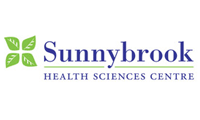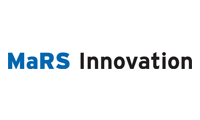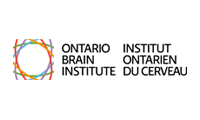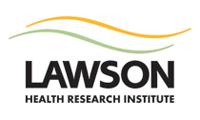Article in The Hill Times Health Policy Briefing: Innovation in medical imaging can keep health care affordable
The Hill Times Health Policy Briefing
By Bart Sullivan
CEO, Centre for Imaging Technology Commercialization (CIMTEC)
As we age, the likelihood of acquiring chronic or potentially life-threatening conditions such as Alzheimer’s and heart disease or breast and prostate cancer increases, as does the chance that we will need access to specialized technology to detect, properly diagnose and treat our ailments.
The number of seniors in Canada is increasing steadily. By 2051, about one in four Canadians is expected to be 65 or over. This is part of an unprecedented demographic transition globally in which fewer babies are being born and life expectancy is increasing. We are also seeing a rise in chronic and deadly diseases in emerging economies. Along with the rest of the world, Canada needs to find effective solutions to respond to the medical realities of the coming decades, while grappling with the economic implications.
Medical imaging technologies have become foundational to healthcare. Options such as ultrasound, magnetic resonance (MR), positron emission tomography (PET), computed tomography (CT), mammography, and digital pathology are being used to more accurately detect, diagnose and treat a range of medical conditions.
Although these devices have many positive attributes, some of them are hugely expensive to purchase and operate, calling into question their practicality and the wisdom of investing in potentially cost-inefficient equipment.
It would stand to reason that innovations that make the healthcare experience less painful; facilitate easier and faster recovery times; provide greater accuracy and efficiency; and are more cost-effective would be wholeheartedly welcomed by the healthcare system. New medical imaging technologies have the potential to enable this scenario.
For instance, increasingly, the imaging industry is focusing on developing software platforms that quickly and automatically process large quantities of data, which reduces the time and cost of completing certain tasks. Innovation in workflow automation such as image-guided biopsy and therapy as well as digital pathology optimizes the use of expensive equipment and practitioner time, which is crucial in our resource-constrained healthcare system.
Canada is known throughout the world for its expertise in medical imaging R&D. Between 1998 and 2011, $1.03 billion of public funds were invested in this area. Our academic centres and spin-off companies are developing leading technologies that will change how we diagnose and treat disease. In 2011, the Centre for Imaging Technology Commercialization (CIMTEC) was created to capitalize on these investments by enabling and accelerating the translation of Canada’s important and world-leading medical imaging innovations into commercial products for clinical use. Funded through the federal government’s Centres of Excellence for Commercialization and Research (CECR) program, CIMTEC’s overarching goal is to help researchers and companies bring their medical imaging innovations to market so Canadians can reap the associated health and economic benefits. The centre is helping strengthen the Canadian medical imaging industry by providing a range of engineering, business development and clinical testing services for startup companies that will create cost-saving devices with the potential to corner a larger percentage of the multi-billion dollar global medical imaging market and develop and attract highly qualified people to high-value jobs in this country.
New medical imaging technologies face a number of hurdles; arguably, the most arduous is gaining acceptance from those footing the bill. A device may advance through the challenging process of acquiring regulatory approval, but if no one is willing to reimburse for the technology, it will simply lie fallow.
When making decisions about what new technologies to adopt, the provincial and public insurance groups that assign reimbursement codes are looking for products that demonstrate clinical utility and improved outcomes, but will also provide increased efficiency (i.e. reduce wait times) and cost savings. And, as prudent stewards of public funds, hospital administrators must make tough decisions about how to allocate budgets most effectively.
Dr. Aaron Fenster, CIMTEC’s Centre Director and Director of Imaging Research Laboratories at Robarts Research Institute at Western University recently delivered a presentation at the U.N. about the future of medical imaging globally. Dr. Fenster says, “Reimbursement pressures are driving current trends in medical imaging technology innovation. Government and healthcare institutions are primarily interested in adopting new technologies that will increase their throughput, while decreasing their cost per patient.” He adds, “To move customers’ products closer to adoption, CIMTEC helps strengthen their value propositions by connecting them to clinicians who test their products and provide valuable feedback to increase the workflow efficiency and clinical utility of the device.”
For example, prostate procedures are currently performed using a systematic pattern-based approach that often results in poor discernment of the location and extent of disease. This necessitates return visits for additional anxiety-inducing biopsies. CIMTEC has world-class expertise in minimally invasive 3D image-guided interventions and is helping several of its customers develop new imaging technologies that either focus on combining high-quality MR or CT images with the much cheaper and more versatile ultrasound, or other variations on ultrasound imaging that substantially improve targeted biopsy and treatment options. The upshot is fewer appointments, more effective treatment with shorter recovery times, and overall better quality of life as a result of minimally invasive procedures as opposed to traditional open surgery.
Because of Canada’s strong investment in the sector, the technologies of our medical imaging innovators have strong potential to be part of the solution worldwide to the conundrum of the rising cost of healthcare provision to an aging population with complex treatment needs, as well as in providing better patient care, with better overall health outcomes and quality of life.
Bart Sullivan is the CEO of the Centre for Imaging Technology Commercialization, a Centre of Excellence for Commercialization and Research, federally funded through the Networks of Centres of Excellence.
Hill Times, Health Policy Review, 17NOV2014








